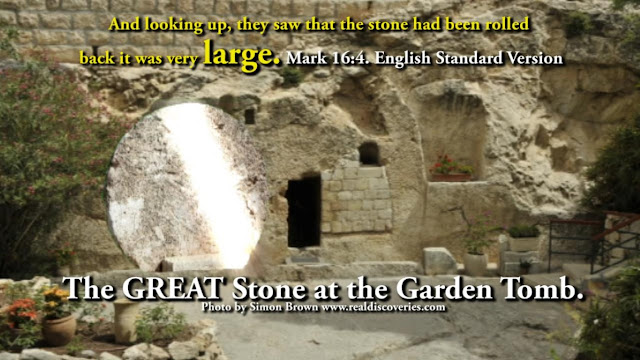Dear beloved friends, I want
to thank some of you for sending me a lovely encouraging email from my last week’s
post, where I was excited to share with you my next trip to the Holy Land, to
take footage for my next film on the Tomb of Jesus.
If you remember I was showing
off with my drone, which I have been practising with getting ready to take to
the Holy Land and do some filming of new sites and Bible evidence.
Well that’s the price one
pays for showing off, as the drone developed a fault and the charger stopped
working, which meant I had to put my trip on hold.
But be sure and encouraged,
when you serve the only one ALMIGHTY true GOD, His amazing SON Jesus lives in
us and feels the same pain as we feel.
Jesus then tells his ALMIGHTY
true GOD, about the pain in His heart, which He feels from our hearts. The
ALMIGHTY true GOD then sends His most loving and caring SON Jesus back with a
100-fold blessing.
English Standard Version
And we know that for those
who love God all things work together for good, for those who are called
according to his purpose. Romans 8:28.
Friends, please may I
encourage you, if you serve the only ONE true GOD, the true fact is, GOD will
never fail you. He hears you, He loves you, He will guide you, as His SON’s
Spirit, Jesus, who is (THE COMFORTER) lives in you. John 14:16.
Even the Spirit of truth,
whom the world cannot receive, because it neither sees him nor knows him. You know
him, for he dwells with you and will be in you. “I will not leave you as
orphans; I (Jesus) will come to you. John 14:17 - 18.
How amazing is GOD.
I have truly been blessed to
discover I am now receiving a new top of the range drone, completely free and
paid for by you tube, because our Tomb of Jesus film has gone from the bottom
to the top and the new Drone can do a 100 fold better than the broken drone.
The new drone can fly out of site and still take live 4 K footage which is
transmitted back to the handset, and then by 1 press of a button the drone
returns home and lands in front of you, while your sitting drinking a nice cup
of coffee.
You can watch the video below, and see the amazing technology GOD
has made possible, especially for those who love Him to use for His glory.
You may like one for yourself
but do not buy a drone to fly over the nudist beach, as that’s not the way to
glorify GOD, and instead end up with a broken nose and a black eye, ha, ha.
I am now holding on before I
go until GOD gives me the signal, then I will go.
May I thank the many people
who sent me the lovely emails?
And may I thank the rest of
you for reading my research and articles.
May GOD truly bless you all
in His SON’s perfect name Jesus.






















